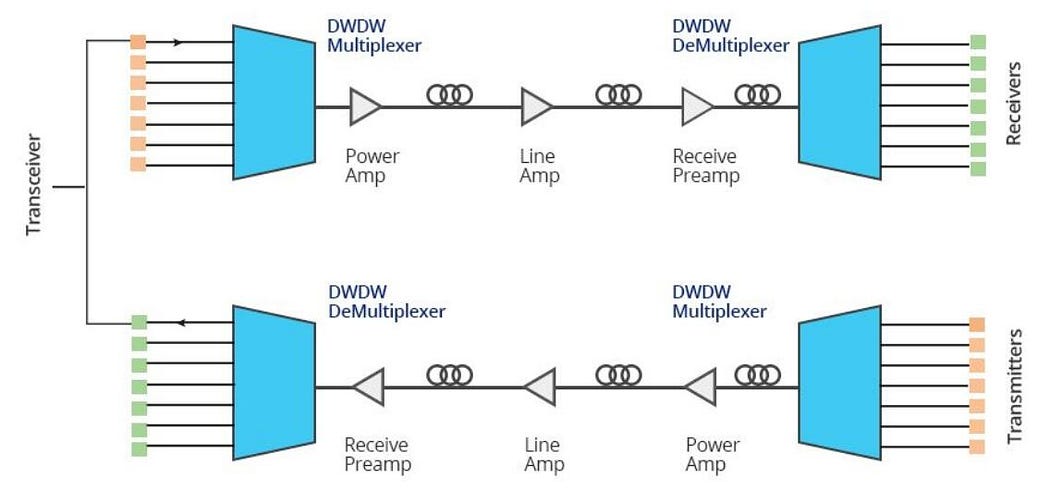It is no exaggeration to say that the advent of DWDM technology has almost changed the landscape of optical networks. With DWDM transceiver being one of its most important components, DWDM network has been widely employed in many different industries and areas to boost network capacity.
What Is DWDM Transceiver and How Does It Work?
DWDM transceiver functions just as other standard optical transceivers — to convert electrical signal to optical signal and then to electrical signal. The difference is that DWDM transceiver leverages DWDM technology to multiplex different wavelengths or several optical signal onto a single fiber to save valuable fiber resources. It is designed for single-mode fiber and operates at a nominal DWDM wavelength from 1528.38 to 1563.86 nm (Channel 17 to Channel 61) as specified by the ITU-T. Except from being applied in long distance transmission, DWDM transceivers can also be used in switch to switch interface, switched backplane applications and router/server interface etc. DWDM transceiver supports up to 10 Gbps and can span a distance up to 120 km, which makes itself optimal for high-capacity and long-haul transmissions.
the working principle of dwdm transceiver
Figure 1: DWDM Transceiver Working Principle

HTF can help you design coherent 400G/200G/100G DWDM/OTN solution, DWDM Single lamda 100G/200G/400G Dual fiber/Single fiber Ultra long distance transmission.




没有评论:
发表评论